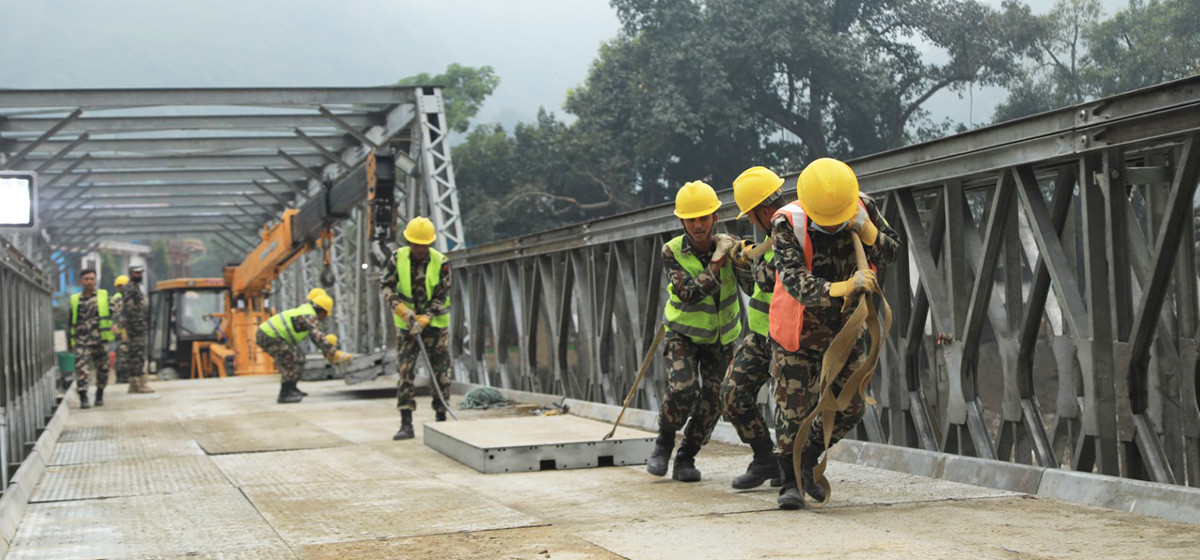
KATHMANDU, Oct 23: A Bailey bridge over the Sunkoshi River near Khurkot has officially come into operation on Tuesday, finally re-establishing the crucial link between Sindhuli and Ramechhap districts which was disrupted by the floods and landslides in late September.
The Bailey bridge, which connects Golanjor Rural Municipality of Sindhuli and Manthali Municipality of Ramechhap, was brought into operation at the same place as the previous one under the initiative of the Nepalese Army after the erstwhile concrete bridge was swept away by the swollen Sunkoshi River on September 28 following two days of incessant rainfall.
The destruction of the Bailey bridge had led to the disruption of transport movement in areas including Khurkot in Sindhuli and Manthali in Ramechhap. As per the District Police Office (DPO), Sindhuli, as many as 250 four-wheelers traversed the previous bridge on a daily basis and it is expected that a similar number of vehicles will use the Bailey bridge. However, with a lower weight-bearing capacity of 15 tonnes as compared to the previous bridge has posed new security challenges to the personnel on duty on either end of the bridge.
Chief of the DPO, Superintendent of Police (SP) Govinda Raj Kafle informed Republica that the narrow girth of the bridge which only enables one-way crossing, in addition to the lower weight-bearing capacity has prompted the police to mobilize additional personnel at the bridge.
“The one-way nature of the bridge demands more security oversight as additional police personnel would need to be to monitor the vehicular movement across the bridge,” he said, “Now on, the police personnel on duty would also need to verify the weight of large vehicles looking to cross the bridge.”
The operation of the Bailey bridge started on Tuesday amid a ceremony which was attended by Minister for Physical Infrastructure and Transport Devendra Dahal. Minister Dahal and his team also inspected the road along the BP Highway. In addition, Minister Dahal honored the technicians and soldiers of the Nepalese Army involved in the bridge’s construction.
The lives and livelihoods of the people in both local levels of Golanjor and Manthali on either side of the bridge were affected badly as local businesses were hit by a dearth of customers and the residents found themselves forced to use alternative routes, which was a painstaking two hour deroute from the bridge.
As per officials from Golanjor Rural Municipality, food and hotel businesses on the Sindhuli side of the bridge were largely affected by the lack of vehicular movement. Disaster Contact Officer at the Rural Municipality Hari Krishna Karki expressed confidence that the business operations would return to their former time after resumption of vehicular movement through the bridge.
“Since the major segment of customers of the local businesses were the passengers whose vehicles would have to stop near the bridge as mandated by regulations concerning time-cards, most business operators faced a dearth of customers prior to the opening of the new bridge,” Karki told Republica, “As vehicles start using the new bridge, the business should return to normalcy.”












